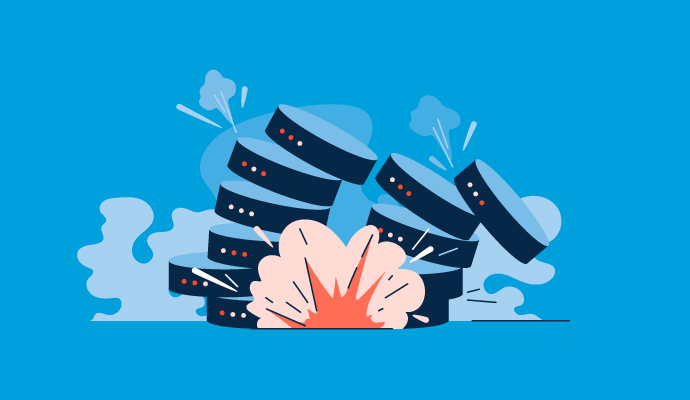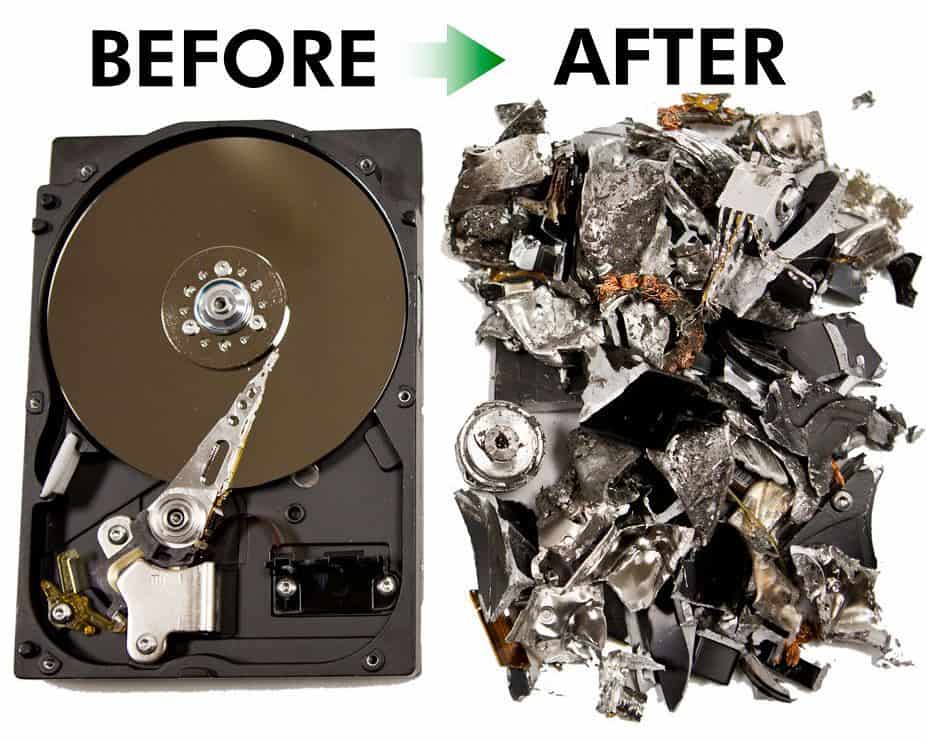Vital Cyber Security Practices for Effective Data Destruction Strategies
Wiki Article
Exploring the Importance of Data Devastation in the Context of Computer System Protection Providers and Protecting Confidential Information
In a period where information breaches are increasingly usual, the value of effective data devastation can not be overstated. What methods can organizations carry out to enhance their information destruction protocols?Comprehending Data Damage
Information destruction is a critical element of computer system security that includes the irreversible removal of data from storage space gadgets to stop unapproved gain access to and possible data breaches. In a progressively electronic landscape, organizations face enhanced threats related to sensitive information being incorrectly accessed or made use of. Reliable information devastation safeguards against these threats, guaranteeing that private dataâEUR" such as client details, copyright, and economic recordsâEUR" can not be recouped after disposal.Comprehending the importance of data destruction extends beyond mere compliance with regulatory and legal frameworks; it is vital for preserving organizational stability and count on. When data is improperly managed or improperly damaged, the effects can be extreme, consisting of monetary loss, reputational damage, and legal responsibilities.

Approaches of Data Elimination

One prevalent technique is data wiping, which includes overwriting existing information with arbitrary patterns several times. This method provides the initial information irretrievable, making it a preferred selection for companies looking for to shield personal details.
Another technique is degaussing, which makes use of an effective electromagnetic field to interfere with the magnetic domain names on storage space gadgets, successfully eliminating the information. This technique is especially efficient for magnetic media however is not appropriate to solid-state drives.
Physical damage is another durable method, squashing or including the shredding of storage devices. This approach warranties that information healing is practically impossible, making it ideal for very delicate info.
Lastly, encryption can function as a corresponding method to data obliteration. By securing data prior to removal, companies can add an additional layer of security, making certain that even if remnants are recouped, they stay inaccessible without the decryption trick. Each technique should be picked based on the degree of data sensitivity and the certain safety and security requirements of the company.
Legal Compliance and Information Safety And Security
Organizations must browse a complex landscape of lawful requirements connected to data safety, particularly after applying techniques of information eradication. Different laws, such as the General Information Protection Guideline (GDPR) and the Medical Insurance Transportability and Liability Act (HIPAA), enforce rigid guidelines on just how companies should manage and dispose of delicate data. Failure to comply with these policies can lead to substantial legal consequences, consisting of substantial fines and reputational damage.Information destruction processes need to be diligently documented to demonstrate compliance with suitable regulations and standards. This documentation not only acts as evidence of adherence to lawful obligations but likewise highlights a dedication to protecting sensitive info. Organizations must additionally develop clear plans regarding data retention and destruction timelines, guaranteeing that data is not held longer than required.

Moreover, regular audits and analyses of information damage methods are important to preserve compliance and adapt to advancing lawful frameworks (data destruction). By proactively dealing with legal needs, companies can reduce risks linked with information breaches and demonstrate their dedication to data safety and security. Ultimately, focusing on legal compliance in information damage processes is not just a governing commitment, yet an essential element of a durable information safety strategy
Effect On Organization Track Record
The track record of a service can be considerably affected by its technique to data damage and administration. In today's digital landscape, where data violations can take place anytime, the failing to correctly take care of delicate info can bring about severe repercussions. Organizations that improperly manage information destruction risk revealing private customer info, review which not just breaches privacy laws yet additionally erodes trust amongst customers and stakeholders.A damaged reputation can lead to lowered customer loyalty, as customers come to be hesitant to involve with a business that has shown carelessness in shielding their data. Adverse promotion bordering a data violation can have an enduring impact, as potential consumers could be hindered by the perceived lack of safety and security. This can result in a direct decline in profits and market share.
In addition, organizations that focus on information devastation as component of their protection approach can boost their online reputation by showcasing their dedication to guarding delicate details. By taking on rigorous information monitoring practices, companies can not just alleviate dangers yet additionally place themselves as credible entities in their particular markets, thus strengthening their overall brand name photo.

Finest Practices for Secure Disposal
Executing ideal methods for protected disposal of information is necessary for reducing risks linked with data violations and guaranteeing compliance with privacy regulations. Organizations must embrace a detailed information disposal policy that details procedures for both physical and electronic information damage.For physical information storage tools, such as hard disks, shredding or degaussing is advised to stop information healing. In addition, organizations need to maintain a chain of custody paperwork throughout the disposal process, making certain accountability and traceability of disposed products.
For electronic data, utilizing software program that sticks to market criteria for data wiping is critical. This software must overwrite existing information multiple times, making healing basically you could check here impossible. It is also crucial to validate the effectiveness of the data damage procedure via audits or third-party assessments.
Training workers on safe disposal techniques adds another layer of safety and security, as human mistake can usually lead to data exposure. On a regular basis updating and examining disposal policies makes sure positioning with progressing guidelines and technical innovations. By implementing these best practices, organizations can significantly decrease the risk of unauthorized data access and boost their total information defense method.
Final Thought
Finally, information damage is an essential aspect of computer safety and security services that guarantees the protection of confidential information from unauthorized accessibility. Applying reliable approaches of information obliteration, sticking to lawful conformity, and acknowledging look what i found the impact on company credibility are vital elements of a detailed data safety and security technique. By embracing best methods for protected disposal, organizations can cultivate depend on with customers and protect delicate data, ultimately contributing to a more safe and secure digital landscape.In an age where information breaches are progressively common, the value of efficient data devastation can not be overstated.Information damage is a critical component of computer security that entails the long-term removal of data from storage space devices to stop unauthorized gain access to and potential data violations. Organizations ought to additionally establish clear plans concerning information retention and destruction timelines, guaranteeing that information is not held longer than required.
By proactively attending to legal demands, companies can mitigate dangers linked with data breaches and show their dedication to data safety and security (data destruction). Inevitably, focusing on legal compliance in information devastation processes is not just a regulative commitment, but an essential facet of a durable data safety and security method
Report this wiki page